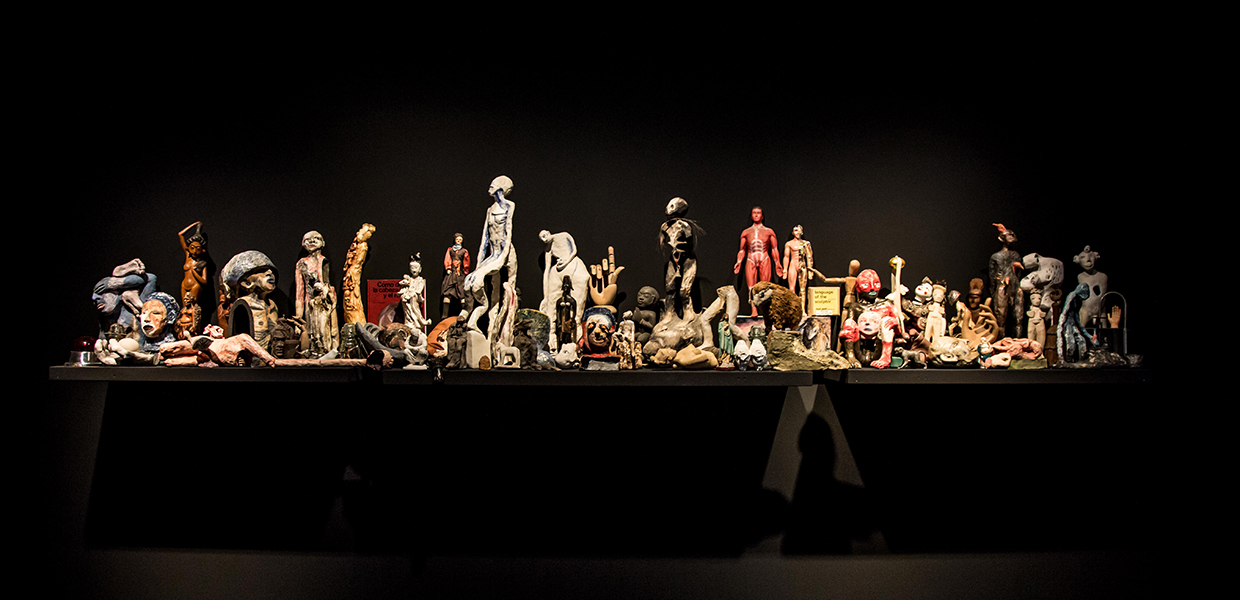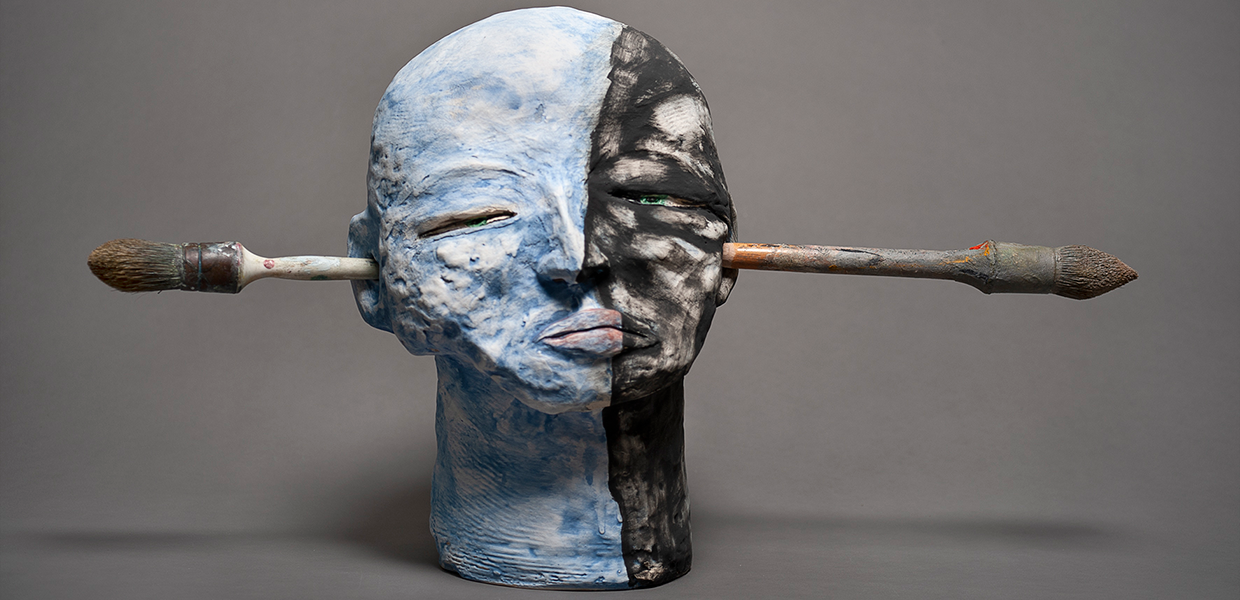Fiona Fell
Could you give a brief description of your current practice and the number of years you have been involved in ceramics?
My current practice involves working with clay as a sculptural medium and its interaction with found objects and space, focusing on its performative potential. I have been working with clay for well over 30 years and have consistently experimented with what I’ve found an intriguing material offering endless possibilities. I was sixteen when I began night classes at Lismore TAFE with John Stewart, and it was from there that my often playful but always dedicated relationship with clay began.
When and why did you move to the Northern Rivers of NSW?
I was born here, so yes, I am a true local …
What part(s) of the Northern Rivers have you worked in and can you tell us about the type of work you have delivered?
Over the years, I’ve facilitated and taught into numerous arts programs within the community. These include workshops at Red Ink, The Buttery, various schools in the region and long stints of teaching at both Murwillumbah and Lismore TAFE. I’ve curated many exhibitions in regional and community galleries. I’ve held private classes and mentored numerous visual artists, many of whom I’ve taught at Southern Cross University in my role as lecturer in the visual arts program.
Has living and working in a regional area defined your arts practice parameters? Have you considered your location restricting or motivating?
Never restricting, this region and country has always been a source of inspiration. I love returning here after time away pursuing the development of my practice through international arts residencies, conferencing and developing my networks. Importantly, returning home allows me to bring back fresh perspectives, new knowledge and experience which I then integrate into my teaching and community engagement.
Has your practice undertaken major changes/challenges in your more mature years?
Absolutely. In the last ten years my practice has shifted from the solely figurative ceramic to a more expansive one, including cross-disciplinary exchanges with film, photography, sound and performance. Significantly however, as happened to many people in the Northern Rivers, the floods of 2017 had a major impact, both personally and aesthetically. I was overseas at the time and my studio was wiped out. Returning to the damage redefined my direction, I found myself giving focus to the entropy of clay as a material and investigating the aesthetic possibilities of seemingly destroyed objects that I needed to resuscitate. This deeply influenced my PhD which I completed in 2018. My PhD was a huge milestone for me because it archived and positioned my figurative ceramic practice, and importantly it enabled me to fully articulate my future artistic trajectory.
How have you maintained your passion for your practice over the years?
My list would include: traveling, working with other artists, interdisciplinary collaborations, research, teaching and learning relationships, conferencing, seeing as much art as I can, regularly exhibiting my work, curating other artists work, grounding myself in nature, critical conversations, laughter, good wine, a decent coffee, paying attention to my body and exercising as need be, and of course my intense relationship with clay …
Do you use social media platforms as a useful resource for your work as an artist?
Generally speaking my practice has been sustained through gallery exhibitions and so on, but knowing how powerful the socials are, I now finally have my own website www.fionafellart.com This is crucial to my ongoing participation on an international level, especially when applying for grants and residencies. To be sustainable as an artist in this digital age requires evidence of constant engagement and proof of your ongoing commitment.
Are you concerned about sharing your skills and knowledge with the next generation of artists in your field?
The privilege of teaching comes with the privilege of continued learning. From the perspective of facilitating workshops with community and people from diverse backgrounds I am deeply concerned that we need more infrastructure and spaces to nurture those artists who do not have immediate access to traditional learning environments. This is a whole other conversation.
From an academic point of view I would say that my only concern about sharing skills and knowledge is not being able to fully impart my essential belief that aspiring artists must understand the technicalities and histories of their chosen form(s) and have the drive and conviction to make it their own. Of course, once they understand the principles, they can abandon the rules, mix them up, do whatever they want.
How do you see the future development of your arts practice?
Over the last seven years I have lived between Barcelona and the Northern Rivers. I intend to continue my practice with a universal perspective that hopefully sees my work being exhibited in different spaces and enables ongoing interactions and collaborations with other artists and audiences interested in the materiality of clay.
Any other comments you would like to make?
A creative life is worth living. It might be hard, but seldom boring.






